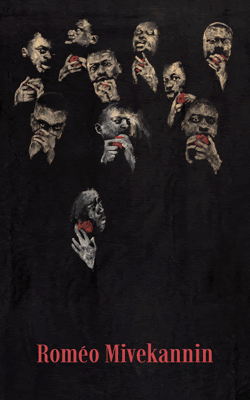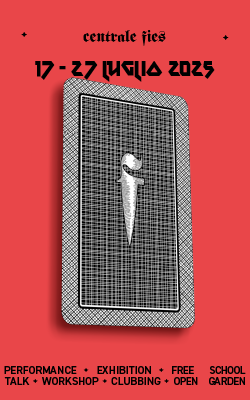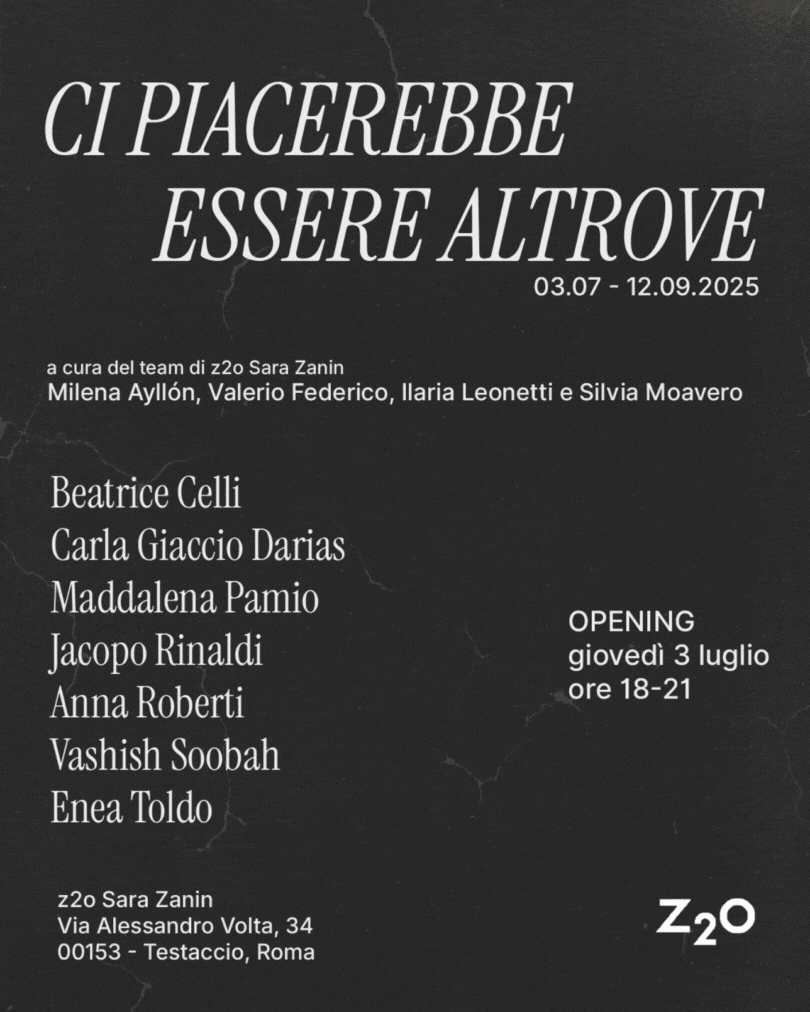[nemus_slider id=”72699″]
—
Segue testo in italiano —
“Through this competition, MAST supports young photographers and artists who are engaging with the topics of industry, technology, territory and work. We see again how little we know about invention, research, production, marketing, and sale of machines and products, how little the images from these fields are different. The strides of technology and the financial economy have turned our world into an abstract. Thus the visualisations of this world become ever more important. Only by means of images are we capable of following the new paths, the new developments in research and in production. For comprehension of the world is the be-all and end-all of a mature citizen in a free democratic society.”
With these important words Urs Stahel, curator of MAST photogallery and of the exhibition that just opened in the Bologna venue, defines the objective of MAST Foundation for Photography Grant on Industry and Work (former Concorso GD4Photoart), a biennial prize which reached its fifth edition and is addressed to young photographers dealing with the basic topics of the foundation activity. Topics that are fundamental also for our contemporary society, which needs to deal every day with themes such as work (missing and worsening), production, exploitation of people and territories.
2018 edition is presented though an exhibition of the four finalists’ images: Mari Bastashevski, Sara Cwynar, Sohei Nishino and Cristóbal Olivares. The two ex aequeo winners, Sara Cwynar and Sohei Nishino, announced during the exhibition presentation press conference, have been chosen for “the complexity of the work’s contents and the poetic vision of Sohei Nishino, on the one hand, and the mixture of intellectual debate and visual freshness of Sara Cwynar’s video, on the other”, according to Stahel’s words.
The aims of the prize are indeed “To show the essential, to emphasize structural aspects, to capture abstract knowledge and the essence of human behavior in images – to research, investigate, develop and produce – to provide a photographic representation that makes the informative and emotional aspects, the concrete data and the meaning, the descriptive and the metaphorical plane possible and accessible: this is the great task of young photographers today. And it is this task that the MAST Foundation for Photography Grant intends to support.” Objectives that were clearly illustrated by all the finalists who, each with his/hers personal vision, visualized problems and characteristics of our times.

Mari Bastashevski retraces, through pictures, documents, interviews and texts the criminal management of the water crisis of the city of Flint, Michigan, occurred between 2013 and 2017, when politicians, technicians and the industry created, as usual, a space for their personal profits to the citizens’ health and life conditions disadvantage, especially for the poorer and most marginalized ones. “Emergency Managers” is one of the chapters of a wider project called “State Business”, where the photographer is engaged in a campaign of legal counter-information aiming at revealing the power processes through which crisis and emergencies are created ad hoc and on purpose kept or controlled to the advantage of states and firms. A disturbing view settled in an organic and strong research, which never becomes pietistic.
As much disturbing, behind the merry look, is the project “Colour factory” by Sara Cwynar, which, trough images collages and a video, focuses an intelligent theoretical discourse about colors production and standardization which, through the perception of the colors itself, gets to the unveiling of the never-solved problem of the weakness and subordination feminine condition inside contemporary society, a condition which remains substantially unchanged since centuries; images of postwar and contemporary cosmetic industries overlap, creating an interesting visual play leading the viewer to reflect on the background of the shiny advertisement landscape we are living every day. Between personal and collective, awareness and utilitarian imposition, colors acquire an important social role, forcibly conditioning the experience of human society.
The black and white pictures by Sohei Nishino instead strike the viewer because of their melancholy and nostalgia feeling for a landscape, the one of the Po river, that slowly changes, even if it looks like it is always the same; the small sequenced images representing details of conversations, meetings and moments of a trip along the river are contrasted to the monumental collages, built with countless small photographic tiles, reconstruct the Po flow from the source to its mouth, obvioulsy including the natural, urban and human landscape which lives, produces and changes along its banks, creating a complex diorama looking abstract from afar, but “exploding” in its complexity and poetry when observed closely. Considering these images it’s impossible not to understand how much, even for our technological society, natural conditions are fundamental and how little, consciously or not, the modern man is taking care of its natural surrounding.
Cristóbal Olivares narrates instead, through images of desolate landscapes, dry documents, portraits of people photographed with their backs to the camera and narrations made of voices and images coming from smartphones, the stories of who, among difficulties and dangers – such as careless smugglers, mined fields and 4000 meters high mountains – flees from the Dominican Republic to look for a better life in Chile. A trip that not always ends happily and, through its development, scatters the already-hard lives of the migrants with sorrows, pains and loss. A narration about the experience of people and their relationship with the landscape, which in turn becomes an occasion for business and exploitation, both legal and illegal. The share of pictures shot by the migrants themselves, compared to the photographer’s ones, create an interesting comparison between the “external” and “internal” representation of the migration phenomenon, sometimes rough, sometimes softer.
Together with the finalists images are to be found sideshows of the other participants to the actual prize edition works and the pictures of the winners of the past editions.
The exhibition, important for the universal themes and interesting because of the visual and intellectual diversity of the proposals, is on display at the MAST Gallery until May 1st, 2018.

MAST Foundation for Photography Grant on Industry and Work —
“Con questo concorso, la Fondazione MAST intende sostenere l’indagine di giovani artisti e fotografi sui temi dell’industria, della tecnologia, del territorio e del lavoro. Dobbiamo continuamente prendere atto di quanto siano scarse le nostre conoscenze sul mondo dell’invenzione e della scoperta scientifica, la progettazione, la produzione, il marketing e la vendita di macchine e prodotti, di quanto siano limitate la diffusione e la circolazione di immagini provenienti da questi settori. Tanto più importante ed essenziale diventa allora visualizzare queste realtà: solo restituendole attraverso le immagini possiamo tentare di seguirne i percorsi, di comprendere le novità e il futuro della ricerca, dello sviluppo e della produzione. E la comprensione del mondo è condizione primaria ed essenziale per l’esistenza di un cittadino adulto e responsabile in una società libera e democratica.”
Con queste importanti parole Urs Stahel, curatore della photogallery del MAST e della mostra appena inaugurata nella sede bolognese, definisce l’intento del MAST Foundation for Photography Grant on Industry and Work (ex Concorso GD4Photoart), premio biennale giunto alla sue quinta edizione rivolto a giovani fotografi che si cimentino con i temi fondanti dell’attività della fondazione. Temi fondamentali anche per la nostra società contemporanea, che con il lavoro (che manca e si deteriora), la produzione, lo sfruttamento delle persone e del territorio deve fare i conti ogni giorno.
L’edizione 2018 presenta in una mostra i quattro finalisti, Mari Bastashevski, Sara Cwynar, Sohei Nishino e Cristóbal Olivares. I due vincitori ex aequo, Sara Cwynar e Sohei Nishino, sono stati annunciati durante la conferenza stampa di presentazione della mostra, scelti per “la complessità dei contenuti dell’opera e la visione poetica di Sohei Nishino da una parte e lo spessore intellettuale e la freschezza visiva del video di Sara Cwynar dall’altra”, secondo le parole di Stahel.
Lo scopo del premio è quello di “Mostrare l’essenziale, rilevare gli aspetti strutturali, cogliere nelle immagini il sapere astratto e l’essenza del comportamento umano – ricercare, indagare, sviluppare e produrre – fornire una rappresentazione fotografica che renda possibile e accessibile sia l’aspetto informativo che quello emozionale, il dato concreto e il significato, il piano descrittivo e quello metaforico: è questo il grande compito dei giovani fotografi di oggi. Ed è questo compito che il MAST Foundation for Photography Grant intende sostenere.”
Obiettivo decisamente ben illustrato da tutti i finalisti che, ognuno attraverso la propria personale visione, hanno visualizzato problemi e caratteristiche del nostro tempo.

Mari Bastashevski ricostruisce, attraverso immagini, documenti, interviste e testi la gestione criminale dell’emergenza idrica della città di Flint, Michigan, negli anni dal 2013 al 2017, dove i politici, i tecnici e la grande industria hanno creato, come di consueto, uno spazio per il proprio interesse personale a spese della salute e delle condizioni di vita degli abitanti, specialmente dei più poveri ed emarginati. “Manager dell’emergenza” è uno dei capitoli del più ampio progetto “Business di stato”, in cui la fotografa si impegna in una campagna di controinformazione giuridica volta a smascherare i processi di potere attraverso i quali le crisi vengono create ad hoc o mantenute e manipolate volontariamente a vantaggio di stati e aziende. Una prospettiva inquietante in una ricerca organica e forte, mai pietistica.
Altrettanto inquietante, dietro all’aspetto giocoso, è il progetto “La fabbrica del colore” di Sara Cwynar che, attraverso collage di immagini e un video, inquadra un intelligente discorso teorico sulla produzione dei colori e la loro standardizzazione, e che attraverso la percezione del colore stesso porta a svelare il problema irrisolto della condizione femminile di debolezza e subalternità nella società contemporanea, condizione che da secoli resta sostanzialmente immutata; le immagini dell’industria cosmetica del dopoguerra e particolari contemporanei si sovrappongono, creando un interessante gioco visivo che porta però lo spettatore a riflettere sui retroscena del rutilante paesaggio pubblicitario in cui viviamo quotidianamente. Tra soggettivo e collettivo, tra coscienza e imposizione utilitaristica, il colore assume un importante ruolo sociale, che condiziona forzatamente l’esperienza della società umana.
Le immagini in bianco e nero di Sohei Nishino colpiscono invece per il senso di malinconia e nostalgia per un paesaggio, quello fluviale del Po, che lentamente cambia, pur dando l’impressione di rimanere sempre uguale a se stesso; le piccole immagini in sequenza che riportano particolari di conversazioni, incontri, momenti di un viaggio lungo il grande fiume, si contrappongono ai monumentali collage che, composti di innumerevoli piccole tessere fotografiche, ricostruiscono il corso del Po dalla sorgente alla foce, naturalmente includendo il paesaggio naturale, urbano e umano che lungo le sue sponde vive, produce e cambia, creando un complesso diorama che pare astratto da lontano mentre da vicino “esplode” nella sua complessità e poesia. Osservando queste immagini non si può fare a meno di notare quanto, anche per la nostra società tecnologica, le condizioni ambientali siano fondamentali, e quanto, consapevolmente o meno, l’uomo moderno poco si curi del suo ambiente naturale.
Cristóbal Olivares racconta invece attraverso immagini di paesaggi desolati, asciutti documenti, ritratti di persone di schiena e narrazioni di voci e fotografie veicolate dagli smartphone, le storie di quanti, tra mille difficoltà e pericoli, tra cui contrabbandieri senza scrupoli, campi minati e montagne di quasi 4000 metri, fuggono dalla Repubblica Dominicana per cercare fortuna in Cile. Un viaggio che non sempre si conclude felicemente e che, nel suo corso, dissemina le vite già difficili dei migranti di dolore e perdite. Un racconto sull’esperienza delle persone e sul loro rapporto con il paesaggio, che diventa business e sfruttamento, sia legale che illegale. La condivisione di immagini scattate dai migranti stessi, contrapposte a quelle del fotografo, crea poi un interessante parallelo tra la rappresentazione “esterna” e “interna” del fenomeno migratorio, a volte crudo, altre volte più morbido.
La mostra, importante per i temi universali e interessante per la diversità visiva e intellettuale delle proposte, è allestita nella Gallery del MAST e resta visitabile fino al 1 maggio 2018.











